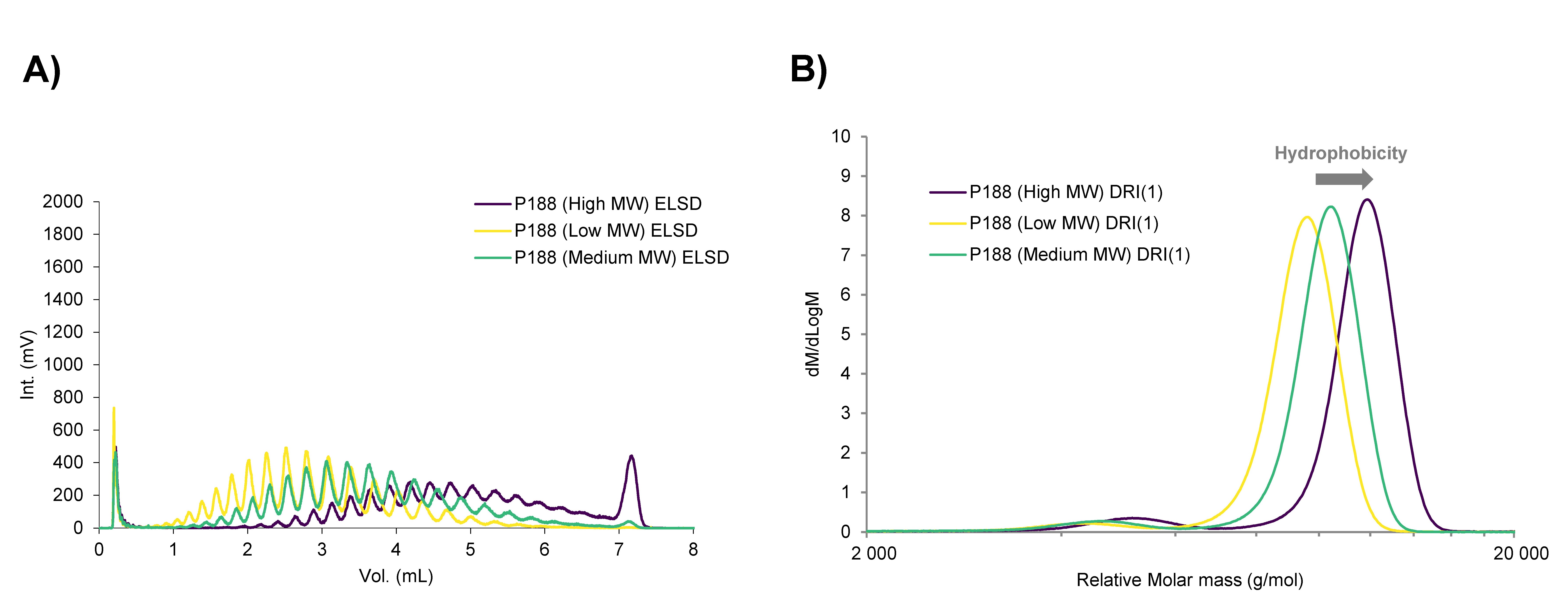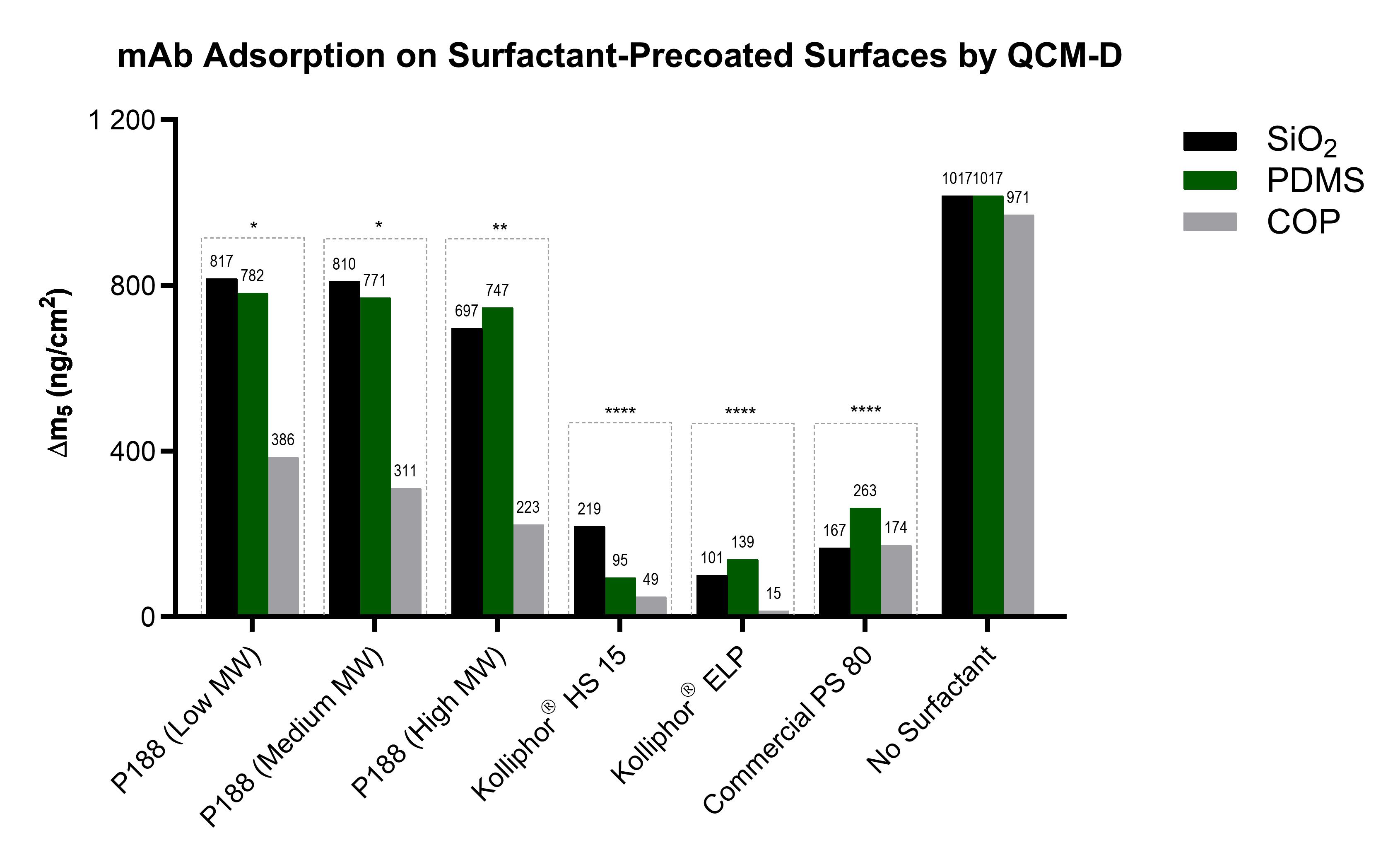Manufacturing and Analytical Characterization - Biomolecular
(M1030-02-13) Protein-Surfactant Interactions at Solid-Liquid Interfaces of Diverse Primary Packaging Materials for Biopharmaceuticals

Felicitas Guth, PhD (she/her/hers)
Head of Development, Pharma Solutions
BASF SE
Ludwigshafen am rhein, Rheinland-Pfalz, Germany- FD
Fatemeh Dabbagh, Ph.D.
R&D Scientist
BASF SE
Ludwigshafen am Rhein, Rheinland-Pfalz, Germany 
Nadine Löw, Ph.D.
Lab leader R&D
BASF SE
Ludwigshafen am Rhein, Rheinland-Pfalz, Germany- MK
Matthias F. Kellermeier, Ph.D.
Senior Principal Scientist
BASF SE
Ludwigshafen am Rhein, Rheinland-Pfalz, Germany - CS
Coralie F. Schneider, Ph.D.
Lab leader R&D
BASF SE
Ludwigshafen am Rhein, Rheinland-Pfalz, Germany 
Bernd Zeiss, Dipl.-Biol. (he/him/his)
Head of Scientific Affairs
Gerresheimer Bünde GmbH
Bünde, Nordrhein-Westfalen, Germany- CR
Christian Redeker, Ph.D.
Manager
Gerresheimer Bünde GmbH
Bünde, Nordrhein-Westfalen, Germany
Presenting Author(s)
Main Author(s)
Co-Author(s)
Methods: Monoclonal antibody (mAb5) formulations were prepared in 20 mM histidine buffer (pH 6.0) containing 0.01% (w/v) surfactant, using either P188 (three variants with varying relative molecular weight), Kolliphor® HS 15, Kolliphor® ELP, or commercial PS 80 for comparison. Formulations were filled into 2R sealed vials composed of Type I glass, BOS glass, or COP, stored under two conditions: quiescent storage at 5 ± 3 C°, or agitation stress (350 rpm, 5 hours, 45° tilt, room temperature). Subvisible particle (SVP) formation and turbidity were assessed using micro-flow imaging (MFI) and UV absorbance. Surfactant/protein adsorption at material interfaces was characterized using quartz crystal microbalance with dissipation monitoring (QCM-D). Surfactants interfacial properties were further evaluated by time-resolved surface tension measurements. Reversed-phase high-performance liquid chromatography (RP-HPLC) and size-exclusion chromatography (SEC) were employed to characterize the molecular weight distribution and hydrophobicity of the P188 variants
Results: Analytical characterization of the P188 variants used in the study revealed increasing molecular weight, late-eluter species, and therefore increasing hydrophobicity in the high MW variant of P188, as confirmed by SEC and RP-HPLC (Figure 1). This structural profile correlated with improved performance in protein stabilization assays. QCM-D measurements (Figure 2) demonstrated a clear reduction in irreversible mAb5 adsorption with increasing P188 molecular weight, with higher MW P188 outperforming the lower-MW grades. Kolliphor® HS 15 and ELP achieved the lowest protein adsorption among surfactants across all tested surfaces (SiO2, PDMS, and COP) in comparison to the surface passivation achieved by the commercial PS 80. Across container types, COP consistently showed the lowest overall mAb adsorption, confirming its inert, hydrophobic character and intrinsically resistant to protein adsorption. In contrast, Type I glass and BOS exhibited higher baseline mAb adsorption, however, the inclusion of these alternative surfactants effectively passivated these surfaces. SVP formation under agitation stress (data not shown) further supported these trends. In BOS and Type I glass, more hydrophobic P188, Kolliphor® HS 15 and ELP reduced particle counts ( >2 µm) to near base-line levels, with almost complete suppression of pharmacopeia-relevant size bins ( >10 µm and >25 µm). Notably, during long-term quiescent storage, all surfactant-container combinations maintained low SVP levels (data not provided) and remained stable over time. Correlation analysis (Figure 3) confirmed strong inverse relationship between the peak molecular mass of P188 and both SVP formation and irreversible mAb5 adsorption across surfaces. These findings reinforce the role of molecular architecture in interfacial stabilization and highlight the superior protective effect of the more hydrophobic P188 variant, and also the excellent performance of Kolliphor® HS 15 and ELP in maintaining mAb stability under mechanical stress, in comparison to PS 80.
Conclusion: This study demonstrates that the more hydrophobic P188 variant is a promising and chemically stable alternative to polysorbates for the stabilization of parenteral protein formulations. Its molecular architecture contributes to enhanced surface passivation and significant reductions in irreversible protein adsorption and SVP formation. These findings align with the growing interest in replacing polysorbates due to their known limitations in stability and degradation. Moreover, Kolliphor® HS 15 and Kolliphor® ELP exhibited consistently strong protective effects across all tested surfaces and container types, matching or surpassing the performance of polysorbate 80. Here the compatibility of the studied surfactants with Type I glass, BOS glass, and COP vials was confirmed by orthogonal analytical methods. Together, the detailed evaluation described in this study provides insight into the surfactants’ role in mediating antibody adsorption and optimal selection of surfactants and primary container closure.
References: 1 Li J. et al. Interfacial Stress in the Development of Biologics: Fundamental Understanding, Current Practice, and Future Perspective. AAPS J 2019, 21(3), 44. (doi: 10.1208/s12248-019-0312-3)
2 Castañeda Ruiz, A.J. et al, Alternative Excipients for Protein Stabilization in Protein Therapeutics: Overcoming the Limitations of Polysorbates. Pharmaceutics 2022, 14, 2575. (doi:10.3390/pharmaceutics14122575)
Acknowledgements: The extensive dataset was generated by a collaboration between BASF and Gerresheimer GmbH.
 Figure 1. (A) RP-HPLC chromatograms of P188 variants showing higher amounts of late-eluting hydrophobic species in the high MW grade. (B) SEC showing molar mass distribution, with P188 high MW exhibiting higher molecular weight at peak.
Figure 1. (A) RP-HPLC chromatograms of P188 variants showing higher amounts of late-eluting hydrophobic species in the high MW grade. (B) SEC showing molar mass distribution, with P188 high MW exhibiting higher molecular weight at peak.  Figure 2. QCM-D analysis of adsorbed mass of mAb5 following surfactant pre-adsorption and buffer rinse on SiO2, polydimethylsiloxane (PDMS), and COP surfaces.
Figure 2. QCM-D analysis of adsorbed mass of mAb5 following surfactant pre-adsorption and buffer rinse on SiO2, polydimethylsiloxane (PDMS), and COP surfaces.  Figure 3. (A) Correlation between P188 peak molecular weight (Mp) and subvisible particle (>2 µm) counts after agitation stress. Negative correlations indicate improved stabilization with higher Mp. (B) Correlation between Mp and irreversible mAb adsorption on SiO2, PDMS, and COP surfaces. Strong inverse relationships enhanced surface passivation with increasing Mp.
Figure 3. (A) Correlation between P188 peak molecular weight (Mp) and subvisible particle (>2 µm) counts after agitation stress. Negative correlations indicate improved stabilization with higher Mp. (B) Correlation between Mp and irreversible mAb adsorption on SiO2, PDMS, and COP surfaces. Strong inverse relationships enhanced surface passivation with increasing Mp. 